
- Index
- Age
- Brand
- 21st Century Toys (12)
- Alert Line (18)
- Army (10)
- Arsa (10)
- Bolt Action (9)
- Buren (6)
- Did (15)
- Doxa (7)
- Dragon (33)
- Dragon Models (6)
- Forces Of Valor (24)
- Glycine (8)
- Handmade (43)
- Helvetia (19)
- King & Country (42)
- No Brand (7)
- Record (6)
- Ultimate Soldier (11)
- Warlord Games (21)
- Zenith (12)
- Other (3469)
- Conflict
- Style
- Antique (10)
- Army (8)
- Army Cap (2)
- Bomber Jacket (3)
- Casual (2)
- Leather Belt Holster (9)
- Leather Flap Holster (4)
- Luxury: Dress Styles (6)
- Military (160)
- Military Jacket (14)
- Military, Vintage (2)
- Motorcycle Jacket (7)
- Original (2)
- Overcoat (5)
- Pea Coat (2)
- Pendant (2)
- Signet (6)
- Trench Coat (7)
- Vintage (11)
- Wwii (2)
- Other (3524)
- Theme
- Type
- Action Figure (77)
- Badges (13)
- Binoculars (32)
- Boot (11)
- Coat (87)
- Equipment (11)
- Field Gear (159)
- Hat / Cap (51)
- Helmet (18)
- Jacket (101)
- Medals & Ribbons (11)
- Personal Gear (73)
- Pocket Watch (11)
- Ring (18)
- Soldier (16)
- Tactical Sling (26)
- Tank (36)
- Uniform (41)
- Uniform / Clothing (119)
- Wristwatch (109)
- Other (2768)
WWII 1942 German Army Reconnaissance FW-189 Flying Eye W. E. F. T. U. P. ID Poster
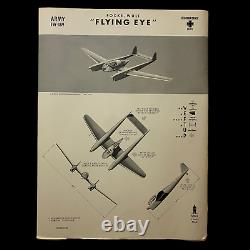
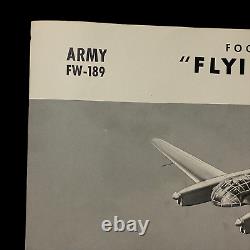
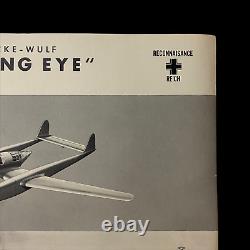
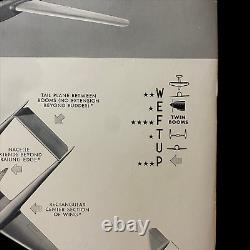
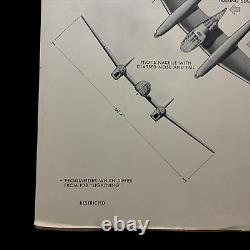
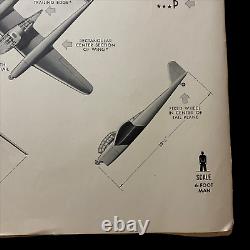
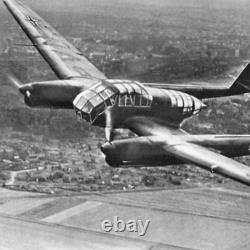


Size: 19 x 25 inches. This original'RESTRICTED' aircraft identification poster was published by the U. Naval Aviation Training Division November 1942.
This poster was posted as a training tool as well as an in theater ID poster to help U. And other Allied pilots, bomber crews and Naval personal to identify Allied and enemy aircraft.
Or Wing, Engine, Fuselage, Tail, Undercarriage, Peculiarities was a system set up for the purpose of aircraft identification and recognition. World War II saw some of the first introduction of these aircraft ID poster to prevent friendly fire and more accurate plane recognition in combat. It was believed these posters alone could save countless lives from friendly aircraft-on-aircraft or friendly anit-aircraft fire. These posters also could cut down precious second pilots, bomber gunners, and naval gun crews would have to ID a plane flying towards them intern saving their lives by shooting first. Each poster provides the silhouettes, dimensions, and relevant information to educate both air and ground personnel in aircraft identification. Immediate identification of aircraft, friendly or not, was essential in order for the observer whether in the air e. Pilot, gunner, or patrol observer, or on the ground, e. Anti-aircraft crew to determine his next course of action e.Acknowledge, attack, evade, or report. Each poster details a large clean sky and background image of the specified aircraft located as the main top imagine on the poster. It also contains important'peculiarities' such as where certain gun emplacements are located, other special aircraft features, as well as wing and length measurements. The Focke-Wulf Fw 189 Uhu ("Eagle Owl") is a German twin-engine, twin-boom, three-seat tactical reconnaissance and army cooperation aircraft. It first flew in 1938 (Fw 189 V1), entered service in 1940 and was produced until mid-1944.
In addition, Focke-Wulf used this airframe in response to a tender request by the RLM for a dedicated ground-attack airplane, and later submitted an armored version for trials. However, the Henschel Hs 129 was selected instead. Called the Fliegende Auge ("Flying Eye") of the German Army, the Fw 189 was used extensively on the Eastern Front with great success. It was nicknamed "Rama" ("frame" in the Russian, Ukrainian and Polish languages) by Soviet forces, referring to its distinctive tailboom and stabilizer shapes, giving it the characteristic quadrangular appearance.Despite its low speed and fragile looks, the Fw 189's manoeuvrability made it a difficult target for attacking Soviet fighters. When attacked, the Fw 189 was often able to out-turn attacking fighters by simply flying in a tight circle into which enemy fighters could not follow.
Night Reconnaissance Group 15, attached to the 4th Panzerarmee in southern Poland during late 1944, carried out nocturnal recon and light bombing sorties with a handful of 189A-1s. These planes typically lacked the main model's rear dorsal machine gun. Small numbers of A-1s were used in the night fighter role in the closing weeks of the war - the aircraft were modified for this new duty by having their reconnaissance equipment removed, and then fitted with FuG 212 AI radar in the nose and a single obliquely-firing 20mm MG FF autocannon in the common Schräge Musik upwards/forward-firing offensive fitment also used for heavier-airframed German night fighters, like the Bf 110G, but for the Fw 189; in the crew nacelle in the space where the rear dorsal gun was normally housed. The majority of the nachtjager 189s were operated by NJG 100, flying out of an airbase at Greifswald. Chronic fuel shortages and enemy air superiority over the 189s' defence area (chiefly Berlin) meant that only a very few kills were scored by these craft.

